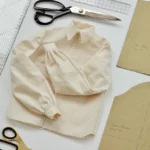Tapestry weaving is an ancient craft that can embrace modern eco-friendly principles. By choosing sustainable materials and adopting environmentally friendly practices, weavers can contribute to a greener planet while preserving this beautiful art form. Here’s a detailed guide on eco-friendly materials and practices in tapestry weaving.

Sustainable Materials
Organic Fibers:
- Cotton: Organic cotton is grown without harmful pesticides or synthetic fertilizers, reducing environmental impact. It’s a popular choice for its softness and durability.
- Wool: Look for wool from farms that use humane and sustainable practices. Organic wool is produced from sheep raised without harmful chemicals.
- Hemp: Hemp is a highly sustainable fiber that grows quickly and requires minimal water and pesticides. It’s strong and durable, making it ideal for tapestries.
Recycled and Upcycled Materials:
- Recycled Yarn: Made from post-consumer or post-industrial textile waste, recycled yarn helps reduce landfill waste and the demand for virgin materials.
- Upcycled Fabrics: Repurposing old textiles or garments into tapestry threads is a creative way to give new life to discarded materials.
Natural Dyes:
- Plant-Based Dyes: Use dyes derived from plants, fruits, and vegetables. They are less toxic and biodegradable compared to synthetic dyes.
- Eco-Friendly Dyes: Some dyes are certified as environmentally friendly, meaning they have minimal impact on water sources and ecosystems.
Eco-Friendly Weaving Practices
Energy-Efficient Equipment:
- Hand Looms: Opt for hand looms or manual weaving tools that don’t require electricity. This reduces the carbon footprint associated with weaving.
- Solar-Powered Equipment: For those using electric looms, consider solar power or other renewable energy sources to minimize environmental impact.
Waste Reduction:
- Efficient Yarn Usage: Plan your projects to minimize yarn waste. Use all leftover materials for smaller projects or as filler in other crafts.
- Recycling Scraps: Collect and recycle yarn scraps or fabric remnants. They can be used in patchwork, as stuffing, or in smaller weaving projects.
Ethical Sourcing:
- Fair Trade: Support fair trade suppliers who ensure fair wages and ethical working conditions for their workers.
- Local Sourcing: Purchase materials from local suppliers to reduce transportation emissions and support local economies.
Eco-Friendly Finishing Techniques
Natural Finishes:
- Biodegradable Finishes: Use finishes and treatments that are biodegradable and non-toxic. These are better for both the environment and the weaver.
- Traditional Methods: Where possible, use traditional techniques that avoid synthetic chemicals, such as natural waxing or oiling.
Minimal Chemical Use:
- Non-Toxic Cleaners: When cleaning or finishing tapestries, choose non-toxic, eco-friendly cleaners. Avoid harsh chemicals that can harm the environment.
Preservation and Maintenance
Long-Lasting Designs:
- Durability: Focus on creating high-quality tapestries that will last for years. Durable pieces reduce the need for frequent replacements.
- Repairs: Learn basic repair techniques to extend the life of your tapestry and reduce waste.
Proper Storage:
- Climate Control: Store tapestries in a climate-controlled environment to prevent damage and reduce the need for costly repairs or replacements.
Promoting Eco-Friendly Practices
Education and Awareness:
- Workshops and Classes: Offer or participate in workshops that teach eco-friendly weaving techniques and materials.
- Sharing Knowledge: Share your experiences and knowledge about sustainable practices with others in the weaving community.
Conclusion
Incorporating eco-friendly materials and practices into tapestry weaving helps protect the environment while celebrating this timeless art form. By choosing sustainable fibers, reducing waste, and using natural dyes and finishes, weavers can create beautiful, environmentally responsible tapestries. Embrace these practices to contribute to a greener planet and ensure the continued enjoyment of tapestry weaving for future generations.











